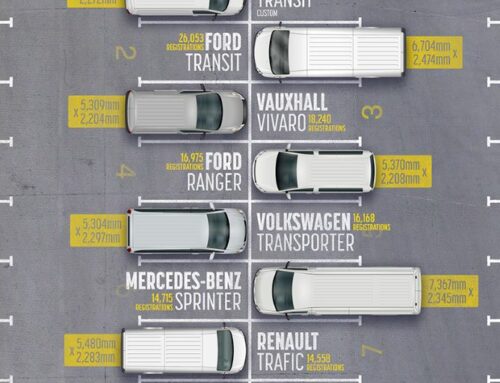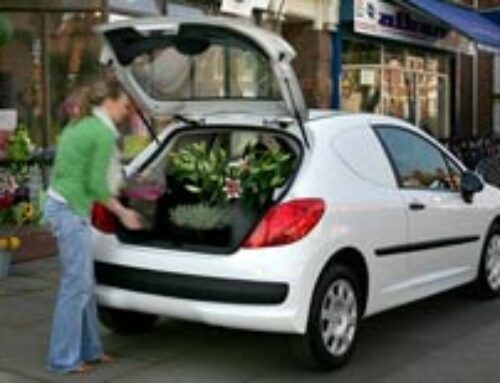IF YOU drive a panel van and you’re often found to be towing a trailer, it’s highly likely that you regularly break the law.
The rules surrounding the use of trailers are pretty straightforward but it’s amazing how many people don’t seem to understand them. This article breaks the problem down into two areas – the law, and then the practicalities, dos and don’ts of how to pull a trailer safely.
First the law: are you actually allowed to tow that trailer, and if so, does your vehicle need a tachograph?
Licences
If you passed your driving test for a car before January 1st, 1997, you can drive any vehicle up to 7.5 tonnes gross vehicle weight (gvw), which will safely cover most vans and trailers.
If you passed your test after that date, you are only allowed to drive vehicles up to 3.5 tonnes gvw. So if your van has a gvw of say 3.0 tonnes and your trailer has a gvw of one tonne, then you’ll need to take another test before you are legally allowed to tow.
Take a tip from me – if you fall within this category, don’t be tempted to flout the law and drive anyway.
VOSA, the Vehicle and Operator Services Agency, is increasingly turning its attention to vans and trailers precisely because so many people are driving them illegally.
You’ll not only face the full force of the law but just remember – if you have an accident, your insurance company won’t pay out. If you’ve hurt someone in a crash you could spend the rest of your life crippled financially.
(Click this link for more on the law on licences and towing.)
Tachographs
The world of tachos, as inhabited by all those firms who operate big trucks, seems a scary place for van drivers, but it shouldn’t really be.
If you stay within 33 miles of your base, you won’t need a tachograph
Basically, the truck boys have to abide by a set of rules including how many hours a person can drive. Tachos are there to protect everyone from the dangers of people falling asleep at the wheel. Not funny if you’re in charge of 40 tonnes.
So do you actually need a tacho when towing a trailer?
The rules are simple – if your van plus the trailer has a gross vehicle weight above 3.5 tonnes combined, you’ll need one (with a few exceptions that we’ll mention later).
So if you drive a 3.5-tonner such as a Mercedes-Benz Sprinter, you’ll knock it over the legal limit as soon as you attach any kind of trailer.
For small vehicles it’s a simple question of maths. A two-tonne vehicle with a one-tonne trailer equals three tonnes and therefore can legally be driven without a tacho.
O-licences
Don’t forget, too, that if you have a tacho fitted you’ll need an O-licence (operator licence). Details about getting signed up for this can be found here.
Exceptions
So can you get round the law in any way? Well yes, provided you fit into one of two main categories.
Firstly, tachos are only needed if you drive for hire and reward. If, for example, you take a large camper van and trailer on holiday you won’t need one.
More pertinent is that if you do not travel further than 50km (33 miles) from your base, you won’t need one either. This is an area where you may be able to stretch the boundaries a tad, but don’t expect the VOSA boys and girls to take your word for it and wave you on your way if they come knocking on your side window.
They’ve seen every trick in the book and are quite savvy with the tacho rules for vans so they’re more likely to come sniffing round your office demanding proof that you don’t stray far from home in the course of your business.
Towing a trailer top tips
Before you move off
Before the start of any journey, drivers need to be pedantic about making sure everything is as it should be, especially if a van and or trailer is shared with others.
And remember that the older/scruffier the trailer the more likely it will be attract attention from VOSA inspectors, and the police. So be extra vigilant!
Let’s start with the glaringly obvious, then move to areas where you may need more information. Check that:
- The seven or 13 core cable and plug is undamaged and the lights are undamaged and working.
- Tyre pressures are correct, the tyres are undamaged, and the tread depth is legal (that applies to the towing vehicle too).
- The wheel nuts/bolts are tightened to the correct torque (remember to also check the towing vehicle). Trailer wheels are very good at working loose, especially if the trailer is often empty or lightly loaded.
- That the mudguards, side-panels, tailgate and any other bits that might be unsecured or damaged are intact, and secured as they should be.
- Has the trailer got a number plate, does it match the van, and is it unobscured and properly lit?
- If you’re using a lightbar, make sure it and the cable are secure.
Then the areas that might need some explanation:
- The load must be evenly distributed, critical if you have one or two very heavy items. Think 600kg bag of sand as an extreme. You MUST load this over the wheels, and not at one end or the other of the trailer. Unless you’ve got more than one of them of course.
- The trailer is not overloaded – you need to know the numbers – what is your trailer’s capacity, and what is the gvw of the van and the trailer? If you don’t know how heavy your materials are, how do you know you’re within the limit? If you suspect you’re over, you’ll need to weigh your load. If you’re regularly loading the trailer to capacity, get a bigger one.
- The load must be secure. You have to think about the load shifting in transit – under emergency braking for example. If it moves, that could cause your trailer to tip and your apparently immovable weight is then flying round the countryside. Tie it down! And unless you’re good with rope and knots, use proper ratcheted straps.
- Overhangs: the load mustn’t stick out of the sides of the trailer by more than 305mm. Safest is to keep the load within the width of the trailer. You’re allowed a rear overhang, but you should attach something to the end of the load so others can see it. You must do this if the overhang exceeds 1 metre. If the overhang is over 2 metres you’ll need a proper board and at night it must be illuminated. There’s no height limit, but no more than 1.7 times the trailer’s track is sensible.
- The trailer must be correctly coupled to the towball or pin – so very easy to get wrong, and with potentially catastrophic consequences because often the wretched thing will stay attached when you move off, but then break free on the first uphill stretch. It suddenly becomes vital that…
- …. a breakaway cable or secondary coupling is used. Make sure this is undamaged and correctly connected. Buy good ones (they’re cheap) and renew them regularly because they can rust.
- The coupling height is correct – the towing bar on the trailer should be level, not pointing up or down. (This is often an indicator of an unbalanced load.)
On the road
- Don’t forget it’s there!! If the van is big and the trailer is small this is so easy to do.
- Be aware of the load. If you’re used to carrying small loads, and suddenly find yourself with 3 tonnes on the back, don’t expect the trailer to feel the same.
- Big is best – long trailers with a double axle are much easier to tow than short single-axle trailers. Especially when it comes to reversing…
- …and if you’re unfamiliar with reversing a trailer, find a quiet carpark and practice.
- Always keep within the legal speed limits, your capabilities and the road and weather conditions at the time.
- If the trailer starts to snake or swerve, ease off the accelerator and reduce speed gently. This is an indication that you are going too fast or the trailer is wrongly loaded.
- Do not brake harshly on a bend as this will make the trailer unstable. Reduce speed in plenty of time when approaching any hazard.
It’s all part of ensuring you keep within the requirements of business van law.
Sources: the AA, NTTA and DVLA







interesting article, but there is an area that might be of interest I explored with the authorities recently.
Specifically this was in relation to my Toyota Hilux. This has a tow weight of 2.5tons. The question was, can I tow a trailer, plated at 3.5 tons, but only loaded to a total (including trailer) of 2.5tons. The answer was yes, because the regs are interested in what you are actually towing, not what the max permissible weight of the trailer is.
HOWEVER, if I had a more recent licence, limiting me to 3.5 tonns max then I would be breaking the law even towing the empty trailer, as licence categories refer to the max permissible load.
I can forward you the email from VOSA if you wish.